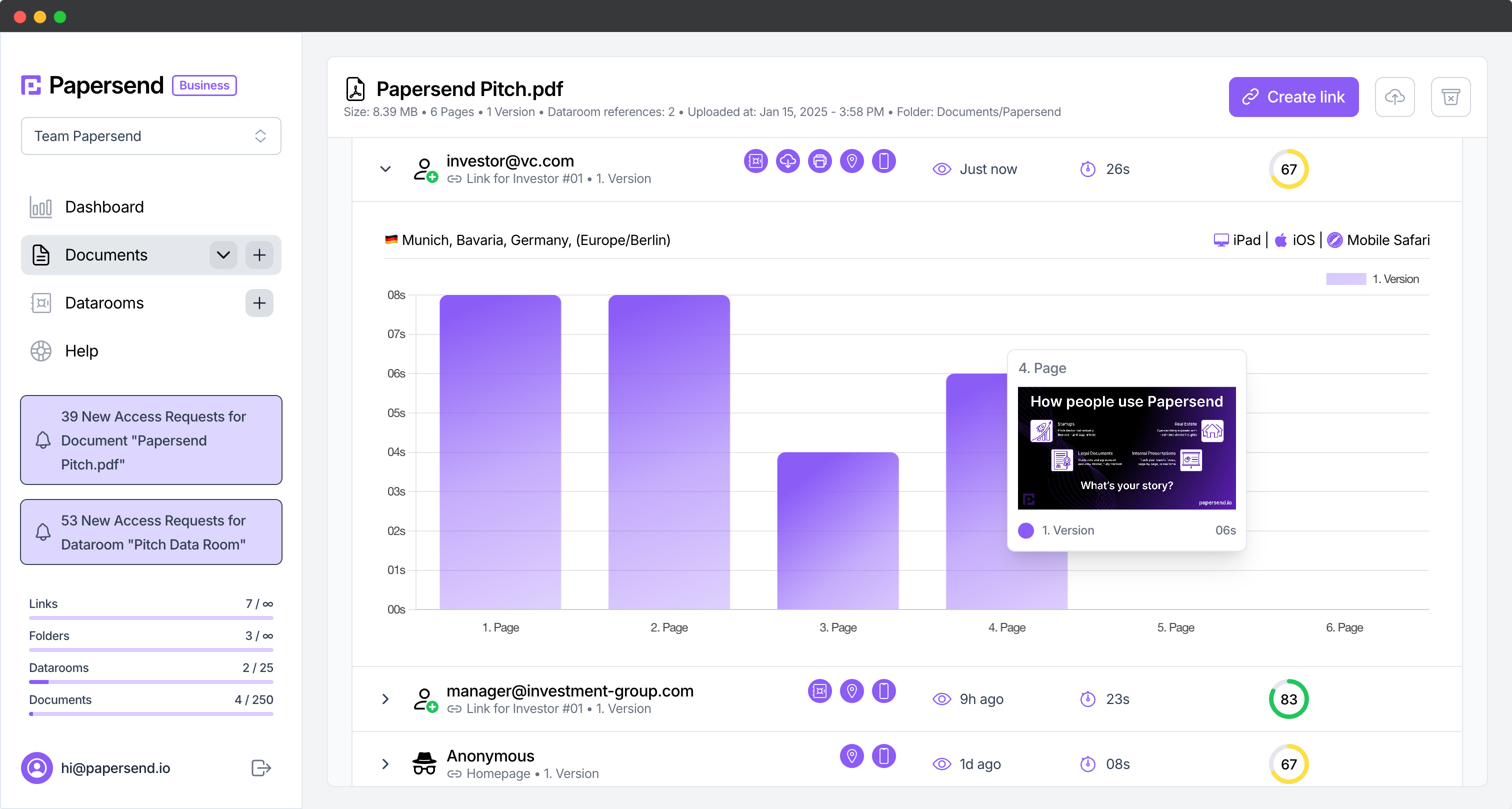Data-Driven Decisions: From Gut Feel to Smarter Strategy
From Guesswork to Growth: Embracing Data-Driven Strategy
We’ve all faced tough business choices relying on “gut feeling.” While intuition has value, today’s market demands more. Data-driven decision making transforms raw information into powerful insights, guiding your strategy from guessing to knowing.

If you want to harness real data for informed choices, better processes, and superior results, this guide is for you. Discover why being data-driven is crucial, see it in action, learn how to implement it, and understand its impact on sales strategy and follow-ups. Let’s build a foundation for smarter growth.
Why Relying on Instinct Alone Isn’t Enough Anymore
Intuition has limits - bias, incomplete information, or just a bad day can skew judgment. Data-driven decision making offers objectivity, grounding choices in tangible evidence.
While experience informs intuition, data validates or challenges it, leading to more robust strategic choices.
What Being Data-Driven Looks Like in Practice: Real-World Examples
A data-driven process isn’t just theory. Consider these leaders:
- Uber: Their model uses real data for pricing, predicting demand, optimizing routes, and matching riders, constantly refining their process.
- Starbucks: They analyze purchase habits, location data, and feedback to personalize offers, choose store locations, and optimize layouts, tailoring the customer experience using data-driven insights.
These examples show it’s about building systems and a culture that actively uses insights for ongoing operational and strategic decisions.
Implementing Your Data-Driven Decision Making Framework: A Practical Guide
Transitioning to a data-driven culture requires a structured process.
Define Clear Objectives What specific business questions or goals need answers? (e.g., “Increase sales close rate by 15%”).
Identify & Collect Relevant Data Determine necessary data sources (CRM, analytics, document engagement platforms like Papersend). Ensure quality.
Clean & Prepare the Data Address inconsistencies, errors, and missing values. Structure data for analysis to ensure accurate insights.
Analyze the Data Use techniques like statistical analysis or visualization to find patterns, trends, and correlations relevant to your objectives.
Interpret Findings & Draw Conclusions Translate analysis results into meaningful, actionable insights. Connect them back to your objectives.
Make Decisions & Take Action Use validated insights to inform strategic decisions and implement changes to your process or strategy.
Monitor, Measure & Refine Track outcomes, measure results against objectives, and continuously refine your approach. Being data-driven is an ongoing cycle.
Sharpening Your Sales Strategy with Data Insights
Sales benefits immensely from data-driven decision making. Instead of generic scripts, use insights to tailor outreach and focus efforts effectively.
Data informs:
- Lead Prioritization: Identify leads showing high engagement or matching ideal customer profiles.
- Content Effectiveness: See which proposals or case studies get read and hold attention. Understanding supported file types ensures you track the right content.
- Optimal Outreach Timing: Determine when prospects are most receptive based on interaction data.
- Personalized Messaging: Understand which pain points resonate based on content interaction.
Nailing the Data-Driven Follow-Up: Timing is Everything
A data-driven follow-up strategy is incredibly powerful. Imagine knowing exactly when a prospect opens your proposal, how long they review it, and which sections they focus on.

This insight transforms follow-ups. Knowing a prospect reviewed pricing moments ago enables a timely, relevant call. Seeing no engagement signals a different approach. Platforms providing detailed document engagement analytics are crucial. Insights from tools like Papersend enable these highly effective, data-driven follow-ups.
Choosing the Right Tools to Gather Actionable Data
Becoming data-driven requires the right toolkit:
- CRM systems: Track customer interactions and sales pipelines.
- Web Analytics platforms: Understand website traffic and user behavior.
- Business Intelligence (BI) tools: For advanced data visualization and analysis.
- Secure Document Sharing & Analytics Platforms (like Papersend): Gain insights into specific document engagement (proposals, contracts). This granular data fuels data-driven sales and communication. Check out how Papersend ensures document protection.
Choose tools that integrate well and provide clear, actionable insights relevant to your objectives.
Making Data Your Strategic Advantage
Shifting to data-driven decision making means fostering a culture that values evidence and seeks insights to guide strategy. It involves asking “What does the data say?” before making critical choices.
The benefits - objective decisions, optimized processes, deeper customer understanding, improved customer retention, and a competitive edge - are significant. Start by refining one area, like your sales follow-up strategy using document engagement data from a tool like Papersend. Consistently applying a data-driven process turns information into your most valuable strategic asset.
Frequently Asked Questions
Being data-driven means making strategic decisions based on the analysis and interpretation of collected data, rather than relying solely on intuition. It involves using insights derived from real data across business areas to guide actions and improve outcomes.
Data-driven decision-making is important because it helps organizations make more informed, objective strategic choices based on evidence. This can lead to improved efficiency, better customer understanding, optimized processes like sales follow-ups, and ultimately, enhanced business performance and customer retention.
A data-driven sales strategy analyzes past performance, engagement insights, and customer behavior data to optimize follow-up timing, frequency, and messaging. For example, data showing precisely *when* and *how* a prospect engages with a shared proposal allows teams to create a much more effective, timely, and data-backed follow-up process.
A typical data-driven process involves defining clear objectives, collecting relevant data, cleaning and preparing the data for accuracy, analyzing it to extract meaningful insights, interpreting these findings in context, making and implementing decisions based on those insights, and finally, continuously monitoring the results to refine the approach.
Uber exemplifies a data-driven process by using real-time data and algorithms to optimize ride matching, pricing, and route planning. Similarly, Starbucks utilizes customer purchase data and analytics to personalize offers, select store locations, and tailor marketing strategies, demonstrating how data informs core business decisions.